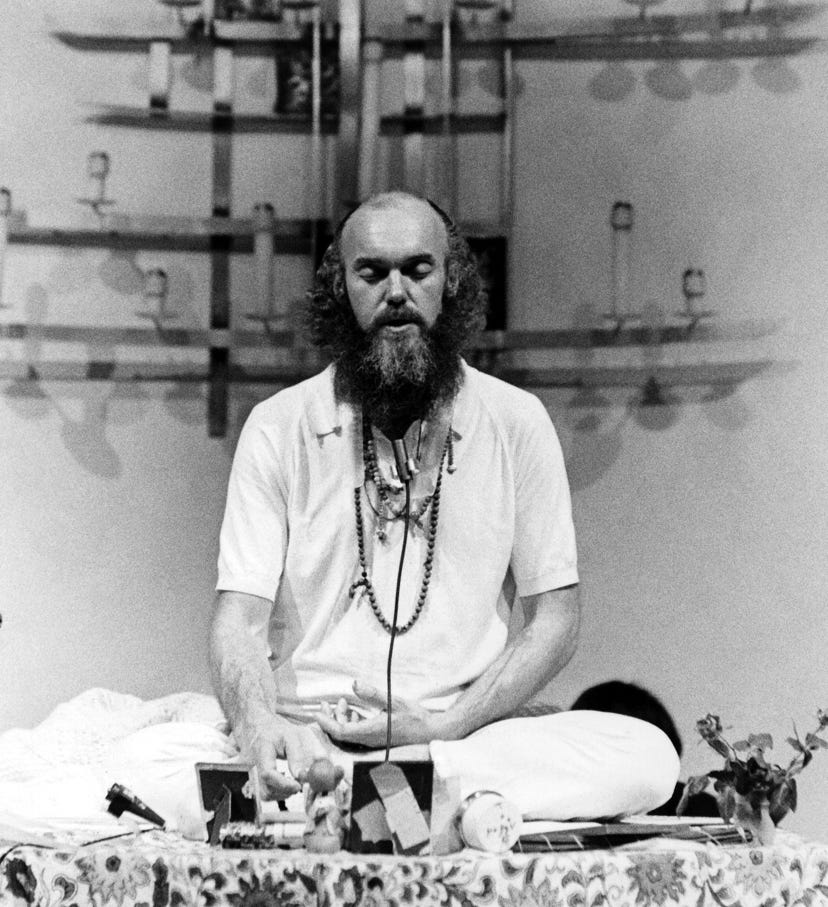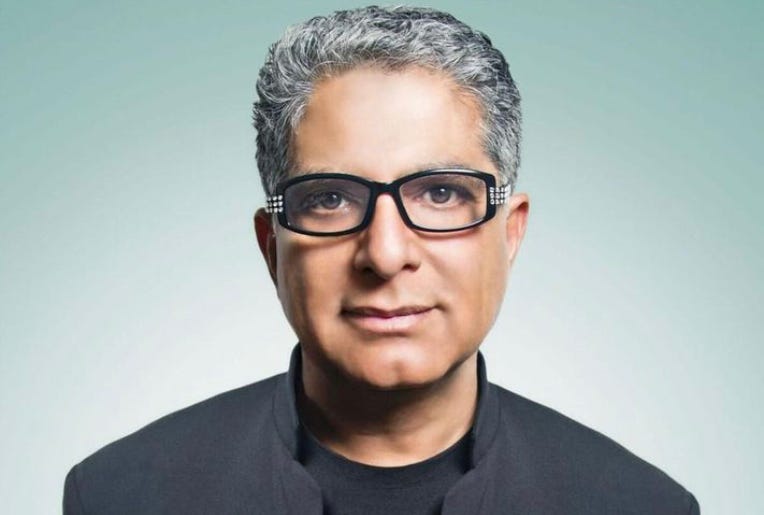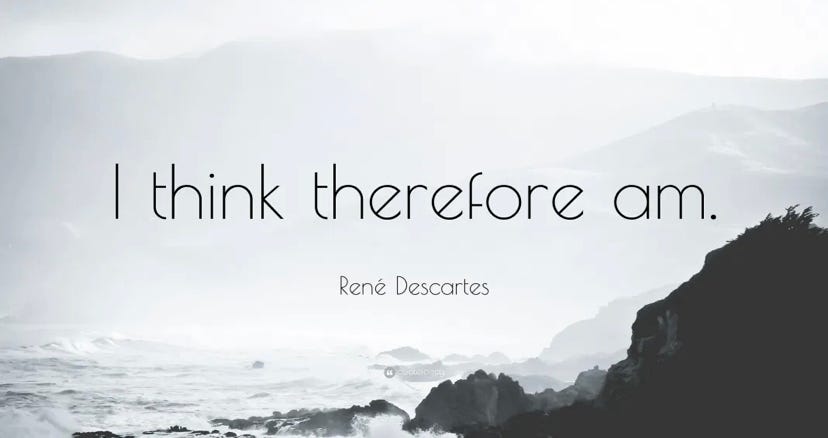
If you are new here, or if you missed any of the past emails, you can take a look at all of the ones from previous weeks in the archives section. You can find it by clicking the link below.
You can’t silence the monkey mind. And that’s ok. Let’s meditate anyway.
Mindfulness practice may be common these days, but that doesn’t mean it isn’t challenging.
At first, it can feel weird or unnatural to stop & actively engage with “nothing.” It seems like a passive way of being. Especially for us humans who are always doing, right?
As a beginner, this is a normal way to feel. It doesn’t mean you should stop or give up though.
“Mindfulness practice gives us a meaningful break from all the doing.”
Mindfulness practice gives us a meaningful break from all the doing. By taking a moment & “pressing pause” on our external activity, we give ourselves a chance to slow down and really notice what’s going on inside, and outside, of ourselves.
We might be “still,” but mindfulness practice is hardly passive. We’re very intentionally engaging with reality.
And the more we keep at it, the better we get at experiencing the present moment as it is. We strengthen our ability to see clearly into the present moments truth— and through the stories we create about it, too.
The aim of this weeks email is two fold. 1) Discuss about why mindfulness practice can be so challenging & what we can do to overcome such challenges. 2) Deepen our understanding of mindfulness & learn about the ways in which formal & informal mindfulness practice can help support our ability to experience a sense of peace in our world.
In this email, you’ll also be getting additional mindful insights for the week, exercises you can take on to challenge yourself, & a few other mindful tings you may find worthy to look into. To get a full break down of what this email will look like, be sure to check out the LOC breakdown below. ☟︎
Let’s dive into it—
Here’s the LOC breakdown for you to PREVIEW what you’re getting in this email (at a glance):
Mindful Insights
In this section, you will find:
(1) Introducing you to 3 spiritual teachers [that you probably haven’t heard of] that I highly encourage you to look deeper into. (2) Podcasts shows that are worth a listen (3) An informative meditation 101 video — a break down of what meditation is, why it’s important, & instructions to get a practice started for you right now
Mindful Weekly Challenge
Your choice — multiple mindfulness practices (formal & informal) that you can take on as a practice for yourself right now.
Mindful Approach
This week we share some perspective onto why mindfulness can be so challenging to keep up with & what we can do to overcome that.
Mindful Reflection
“Uncovering & reflecting on a passage from one of the Buddha’s teachings about cultivating the good.”
Mindful Insights
1) Ppl you ‘outta know more about —
There are so many ppl in this world of whom we can learn so much from. But the thing is, there’s over 7.5 billion ppl, which means tons of information out there, which can seem overwhelming & confusing. Especially because different ppl have so many different perspectives or approaches to how they do things. So how do we know which information to give life too or who to even believe?
For me, I am aware of how beneficial it can be to find others who have walked the path I’m walking & who are also succeeding at it to learn from. And knowing I can get lost in the noise because there are soooooooo many different perspectives out there, instead of getting overwhelmed trying to look up or find ppl I can relate too, I go based off energy & familiarity.
In other words, if someone I know, refers someone my way, I look into them and based off the vibe I get, I decide if I want to follow them or not. I have found that word of mouth works better than choosing the ladder approach.
And so that’s what I intend on doing here for you.
Below are 3 very influential spiritual leaders that I’ve been following for awhile now who I learn so much from & I think you can too. Check them out. If you haven’t heard of these ppl before, even better—see if you can give them a chance and see if they resonate with you too.
-click the pic to find their Instagram-
Jay Shetty —
Jay Shetty is a British bestselling author, former monk, and purpose coach.

Ram Dass —
Also known as Baba Ram Dass, was an American spiritual teacher, psychologist, and author who dedicated his life to reaching out & sharing his teachings across the world.

Deepak Chopra —
an Indian-American author and alternative-medicine advocate & a prominent figure in the New Age movement.

2) Podcast to listen too (Worth it)
As mentioned above, word of mouth is powerful. And just like we benefit off recommendations for best places to eat or hang out at, same applies when it comes to recommendations for self help.
Below I listed a few podcasts that I’ve been enjoying lately that provide so much VALUE. If you haven’t checked into these shows, def give it a look over. You may find your new favorite podcast to listen too.
* These shows are linked to Spotify. If you do not have Spotify, you can also find these shows on other apps that offer podcast too. *
The BluePrint Podcast — to live a meaningful & purposeful life
The Savvy Psychologist’s Quick & Dirty Tips for better Mental Health
3) Meditation 101 — mini webinar video
This is a mini webinar video I created explaining what meditation is, why we should practice, & practical step by step instructions to start your meditative practice right now.
Mindful Challenge
Here is a PDF sharing with you a few options of some mindfulness practices you can take on for yourself this week.
You will find two sections. One section offering formal practices & one section offering informal practices. A best option would be to pick one from each section.
Formal (meditation practices—like the body scan, metta, traditional seated meditations) & informal (activities to help cultivate awareness of habits, body awareness, and awareness of impulsive and reactive patterns) mindfulness practices are most effective & can lead to increased effects when practiced on a regular basis using the same time and location.
*click the picture below for access*

Mindful Approach
How often are you being mindful of your monkey mind (your constant flow of thinking)?
Your lack of awareness on your thoughts or your identification with your thoughts may be what’s creating such a challenge in cultivating a sustained & consistent mindfulness practice for yourself.
Subtle Unnoticed Thoughts
Unnoticed thoughts, in a very subtle way, condition different emotions within us.
If we can make it a habit to catch those little thought bubbles, we can see how it can be subtly influencing our emotions.
“Your lack of awareness on your thoughts may be what’s creating such a challenge in cultivating a sustained & consistent mindfulness practice for yourself.”
Ever listen to the background music in a movie or show? It’s so subtle, there to manipulate our emotions (for example—to create some sort of suspense or anxiety, the music changes). When you notice it, you can see that may be why your hearts racing during certain scenes in a movie.
Our background thoughts are almost like the background music to our lives—influencing how we feel like (when we watch a movie), just unaware of it.
Noticing that emotional response to your thoughts opens you up to a whole other place of greater freedom.
Our emotions are constantly being manipulated by things we’re unaware of. As soon as we become aware though, there’s a chance for more space in the mind for discernment & choice. And then no longer are we in the mercy of the background music.
You Are Not Your Thoughts
And now with this newfound awareness, you may notice that thoughts specifically, have a lot to say. And that it’s always going (a lot like a monkey jumping all over the place). You may also notice that a lot of the shit it says, is just that…a lot of shit.
For instance, we may be sitting in meditation & notice that we have thoughts that try to deter us away from the practice—thoughts like “you’re doing it wrong; you’re late; go do something else; you’re wasting time; meditation isn’t for you; you can’t be mindful, you don’t have it in you; why bother?…Etc.”
If you struggle to identify these thoughts as just thoughts & instead consider them true, you may find mindfulness practice to still be challenging because well you’re believing the lies of the monkey mind.

Our sense of self & personal identify is often created from our thoughts. And because most of us are quite addicted to who we think we are (our personal identities), it becomes challenging to let thoughts, feelings, or behaviors go that we’ve identified with as apart of us for so long.
I think, Therefore I Am
We use phrases such as, “I am sad,” “I am angry,” & “I am anxious,” to identify ourselves which further validates to ourselves that we are we think we are. But there are other more effective ways we can relate to our experiences without attaching ourselves to it.
Try This—
Next time someone asks you "How are you feeling?" try replying,"I am a human being temporarily experiencing the emotion of sadness," and see what a bizarre look you get. While it’s uncommon for most ppl to speak in this way, continuing to do so, will allow you to see thoughts for what they are….just thoughts.
The Negative Bias
We need to also recognize that our thoughts have a negative bias.
As defense mechanisms, our minds have been trained to be biased toward negative thoughts and language in order to try to avoid possible future harm.
All of our lives, we were told what NOT to do. We were conditioned & trained to understand how to behave and NOT to behave the way we actually want to.
For example, some of the things we may be able to recall that we were told NOT to do can be, “Don't stick your tongue in the socket!" "Don't jab your sister with the fork!" "Don't run out into traffic!" "Don't be late!" & “don’t be a baby.”
Is it any wonder why so many ppl suffer from negative self-talk, low self-esteem, and cannot see themselves or whatever they do as "good enough"?
This is why mindfulness is such a powerful tool to help us get out of our own way.
Mindfulness practices were devised and designed to take us to the other side of our thoughts, beyond our thinking processes.
Ultimately, through dedication and practice, we can learn (although in the beginning only for brief instances ) to dis-identify with our thoughts, observe them non-judgmentally, and thus avoid letting them drag us around controlling our lives.
Mindful Reflection
A passage from one of the Buddha’s teachings:
We can do it
Abandon what is unskillful,
One can abandon the unskillful,
If it were not possible, I would not ask you to do so.
If this abandoning of the unskillful would bring harm and suffering,
I would not ask you to abandon it.
But as the abandoning of the unskillful brings benefit and happiness,
Therefore, I say, “abandon what is unskillful.”
Cultivate the good,
You can cultivate the good.
If it were not possible, I would not ask you to do it.
If this cultivation of the good would bring harm and suffering,
I would not ask you to cultivate it.
But as the cultivation of the good brings benefit and happiness,
Therefore, I say, “Cultivate the good!”
-Buddha
The Buddha was a wise spiritual teacher of his time who helped to support so many individuals on their spiritual journey to alleviate suffering. Today, his teachings still hold so much weight & is continued to be widely used to support so many of us in our healing journeys.
The passage above is one of my favorites from the Buddha’s teaching. Because to me, it represents his compassionate heart & willingness to guide humans towards cultivating a life without suffering.
The mind of the Buddha doesn’t see good or bad ppl, but suffering and the end of suffering, & guides those heading toward suffering through greed or anger or fear to take care, to pay attention, to see how much more they are capable of. He sees those heading toward the end of suffering through wisdom and loving kindness. He sees the light in all of us. He sees our potential, our ability, to cultivate greatness.
Now try and read the passage again & really read it. Try and feel the message. Let it resonate with you. Get inspired. Then see if you can experiment with ideas of cultivating a better life & see where those ideas takes you.
.
.
.
& that’s all for this week my friend. Thank you so much for being here & for being you. Have a beautiful & blessed week.
until next week,
namaste.
**if you liked this weeks newsletter, PLEASE scroll all the way up to the top or all the way to the bottom, & press the ❤️ to show the newsletter some love. I would greatly appreciate it.**
ALSO — if you haven’t already, you can join the private group on FB where we can get conversations going & talk about important & meaningful topics or ideas as it relates to us or the world. Right now, we have 7 members. Only thing missing is you❤️
Join the group —
ZEN SPACE
I’m Victor.

Or the mindfulness guy.
I aim to find calm & balance in my life through inspirations between alternative Eastern traditional Buddhism styles of meditation & mindfulness, as well as modern secular styles too.
I believe that we ALL have the capacity to create greatness for ourselves & I’m willing to show you how.
you can find me hanging out on:
Instagram —@2whomitmayconcrn_
Facebook — @iamzenrn
TikTok — @iamzenrn
Join the fam!
ZenRn Facebook Community
Enjoyed the email?
Tell your friends or loved ones! Share with someone you feel may greatly benefit off just having some positive content in their email box every Monday. (& it would also mean the world to me).
Want More?
Visit the Zen Rn website for more mindful treats >>
https://www.iamzenrn.com
~I’m here to hold space for you because you deserve it.~
Victor Padilla



